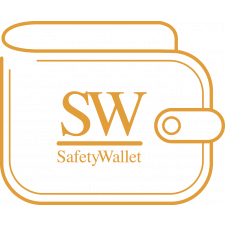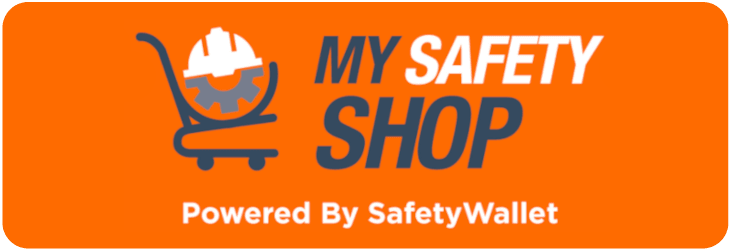Health and Safety Risk Assessment for Working from Home
Working from Home
The past year, with the emergence and spread of SARS-CoV-2, the classification of it as a pandemic, and the subsequent lockdown and quarantine regulations that followed to curb the spread of the virus, has changed the way in which a lot of businesses operate.
Employees were forced to work remotely, where possible, for long durations of time and it became imperative to include health and safety risk assessments for working from home, as the home environment, much like any other, also presents its own unique hazards and risks.
Health and Safety Implications of working from home
The Occupational Health and Safety Act 85 of 1993, requires that employers provide and maintain a work environment which is safe and without risk to employee health and safety, as far as it is reasonably practicable.
The workplace can be classified as anywhere where a person performs work in the course of their employment and the duties of the employer under OHSA extends to anywhere that the employer performs work for their employer, even at home.
However, understandably, it is not always reasonably practicable for employers to provide employees with the same working conditions that they would typically enjoy at the premises of the employer.
Nevertheless, employers must identify the hazards and risks that may arise in the employee’s remote working environment and determine how much these risks or hazards can be removed or mitigated.
It was not possible to conduct individual home inspections, and neither was it practicable during lockdown given the circumstances. For this reason, employers had to rely on the completeness and the accuracy of information that was provided by employees pertaining to their working environments at home.
Risk assessment for working from home
Health and safety Risk assessments for working from home may seem ridiculous, especially when considering that people are in a familiar environment, however, accidents happen at home as much as they do anywhere else.
One way to ensure that hazards in the home are identified and that the risks are evaluated is to evaluate the environment, equipment, objects, and other components including:
- Desk area – whether there is adequate space, tripping hazards, whether temperatures can be controlled, whether there is adequate illumination, and other factors.
- Display screen set-up – whether the desk and chair is set-up correctly and adjustable, that there is adequate surface space, that the keyboard and mouse are clean and correctly place, and other factors.
- Electrical and fire safety – which involves inspection on smoke detectors or equipment, waste disposal, electrical equipment, wires, and other factors.
- Stress and welfare – Involving whether the employee takes frequent breaks, carries out regular stretches, maintains proper posture, has easy access to first aid equipment, and others.
- Manual handling including whether items are within reach, or whether there are heavy items that must be lowered, and whether the employee knows how to correctly pick up, carry, and lower heavy items.
- Slips, trips, and falls – whether there are floor coverings and whether they are secure, the carrying of hot drinks and food upstairs/downstairs, whether stairs and corridors are free of trip hazards, and others.
- Lone working which involves whether the employee is familiar with the lone working health and safety procedure, that the employee can contact their manager easily, whether there is a check-in system, whether the home is kept secure while the employee works, whether laptops and important files are kept locked away when not in use.
Employer’s considerations pertaining to employees working from home
Employers remain responsible for the employee safety in the workplace, as far as reasonably practicable, whether they are on the organisation’s premises, or working from home.
Where health and safety risk assessments for working from home cater for employees safeguarding their own health and safety on behalf of the employer, employers must consider the following issues that may arise:
- Insurances, for either mortgage or lease agreements in addition to the loss or the damage of equipment.
- Telephone equipment in addition to suitable internet systems and remote access to the organisation’s databases.
- Working hours, effective communication, isolation, and efficient support.
- Where the employee can set their workstation up so that it does not interfere with family life and that family life does not interfere during work hours.
- Is the work a risk to others who are in the home such as children, the elderly, or other vulnerable people?
- Fire risks and the provision of fire extinguishers.
- Tool and/or material storage.
- Home and document security.
- Provision of first aid and the recording and reporting requirements for incidents and accidents during lockdown, and several others.
Working arrangements for consideration
Apart from employees conducting health and safety risk assessments for working from home, there are considerations that employers must make towards lone working supervision, working with display screen equipment, and stress and mental health.
Lone working without supervision
There are always increased risks for employees who work alone without any direct supervision or anyone to help when things go wrong. Employers must ensure that there is effective communication with such employees and employers must ensure that regular contact is made to ensure that they are healthy and safe.
Working with Display Screen Equipment
People who are working from home on a long-term basis face risks associated with using display screen equipment (DSE) and these risks must be controlled. This includes employees who must conduct workstation assessments from home.
Some steps that can be taken to reduce the risks from display screen work includes, but is not limited to:
- Taking rest breaks, at least 5 minutes every hour, or changing activity to take a break.
- Avoiding awkward and static positions and postures by ensuring that positions are changed frequently.
- Getting up and moving around or doing stretching exercises.
- Avoiding eye fatigue by changing focus and blinking frequently.
Stress and mental health
Working from home may lead to increased levels of work-related stress that impact negatively on the mental health of workers. Being away from the workplace may make it more difficult to find support and this can be controlled by employers by:
- Staying connected regularly and establishing a system where employees can check in.
- Having an emergency point of contact
How does SafetyWallet support its subscribers?
SafetyWallet, in partnership with MAKROSAFE and OHS Online, ensures that subscribers can obtain the highest level of compliance with the Occupational Health and Safety Act, all other Regulations, and more.
Click on the image below to find a SafetyWallet Solution that suits your business (Branch/Site specific) and get the 21 benefits along with the subscription:
MAKROSAFE / SAFETYWALLET / MY SAFETY SHOP are in Partnership.
Through the assistance and support in the health and safety programme of the subscriber, SafetyWallet helps subscribers with the health and safety risk assessments that must be conducted to ensure that subscribers are compliant in providing a healthy and safe working environment.

-Health-and-Safety-Risk-Assessment-for-Working-from-Home-Banner-1.jpg)





Comments (4)
Good day. Do you have an open vancies available,I would love to do health and safety files.
2022-09-28 12:28:12Dear Leilani Thank you for your comment and for reading our blogs... Unfortunately at this time we do not have any vacancies... Please do continue reading and learning, here are some free downloads for you... https://www.mysafetyshop.co.za/Shop/Category/Free-Downloads
2022-09-29 07:39:49Employers remain responsible for the employee safety in the workplace, as far as reasonably practicable, whether they are on the organisation’s premises, or working from home.
2022-11-10 13:52:30Dear Aditya Thank you for your feedback in comment, we really do appreciate it... Please do follow this link and choose a suitable Health and Safety Risk Assessment Package for your Business: https://www.mysafetyshop.co.za/Shop/Category/Monthly-Health-and-Safety-Consulting-Services
2022-11-11 10:58:46The article on "Health and Safety Risk Assessment for Working from Home" by Safety Wallet is a timely reminder of the importance of workplace safety, even when working from home. The article covers various safety hazards associated with working from home and provides tips for mitigating these risks. The article is a helpful resource for those working remotely.
2023-02-28 17:15:15Good Day Thank you for your wonderful comment, we really do appreciate it... Kindly follow this link for our Risk Assessment Training Course, it will most certainly add value to your Risk Assessment even working from home: https://www.makrosafe.co.za/training-courses/risk-assessment-training-course
2023-03-01 08:47:39ANTONIE C BOTHA SAFETY MANAGER / ASSURANCE MANAGER COVER LETTER I am a highly-skilled operational risk professional within the mining industry. I have expertise in leading HSE and risk operations while ensuring regulatory compliance and enforcement. Throughout my career I have accumulated comprehensive experience through the positions I have held, including but not limited to taking on roles as a SHEQ Safety Operations Manager and Assurance Manager. I will make a significant contribution to the success in your organisation. I have demonstrated success in determining and directing business development activities, establishing the organisations’ values and mission and collaborating with and supporting the organisations’ corporate alliances. I have finely honed abilities in promoting safe working practices through developing, deploying and overseeing health and safety programmes and policies to achieve employee training and knowledge needs. Ultimately, I have proven expertise in ensuring that business strategies are geared towards growth, profits and shareholder return. Following are the highlights of my expertise: • Health, Safety & Risk Management • Compliance • Operational Reporting • SHEQR Management & Solutions Development • Auditing second and third party With my abilities, as well as my skills, I am ready to advance my career and fulfil a role that best complements my competencies. Please feel free to contact me at your earliest convenience. Thank you in advance for your time and consideration. Sincerely, Antonie C Botha hope you can consider me . 0724088804
2024-08-19 10:37:42Dear Mr. Botha, Thank you for your interest in our organisation and for taking the time to submit your application. We appreciate your enthusiasm and the impressive qualifications you have shared with us. At this time, we do not have any vacancies available and are not accepting applications. We wish you the best of luck in your job search and future career endeavors. Thank you once again for considering our organisation.
2024-08-20 07:53:11